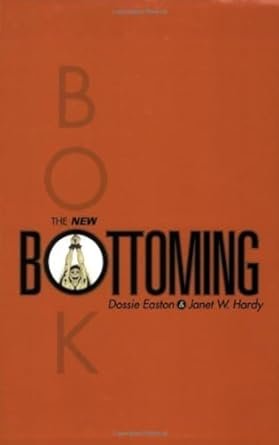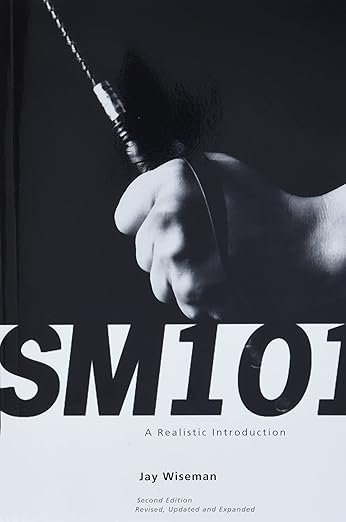Understanding BDSM: A Brief Overview
What is BDSM do I need to read BDSM books to understand it or practice it? BDSM is an acronym that encompasses a wide array of practices and dynamics within the realms of bondage, discipline, dominance, submission, sadism, and masochism. These elements represent a spectrum of erotic expression that can range from mild play to more intense scenarios, reflecting the diverse preferences and interests of practitioners. Understanding the core concepts of BDSM is essential for those who wish to explore this complex and often misunderstood aspect of human sexuality.
At the heart of BDSM is the emphasis on consent and negotiation. It is vital for all parties involved to engage in open communication to establish boundaries, desires, and limits before any activities take place. This practice of negotiation fosters trust and ensures that all participants have a clear understanding of what to expect. Consent is not merely a formality; it is an ongoing conversation that can evolve during a scene, allowing for adjustments and ensuring the comfort of everyone involved.
Safety is another crucial component of BDSM. Practitioners often adopt risk-aware consensual kink (RACK) principles, which emphasize awareness of risks associated with BDSM activities and promoting informed consent. Safety measures may include using safe words, which provide a means for participants to pause or stop activities if needed. Additionally, educating oneself about the practices involved is essential, as it contributes to a more informed and enjoyable experience.
The significance of BDSM Books cannot be overstated; it serves as both an introduction for newcomers and a source of deeper understanding for seasoned practitioners. Books dedicated to BDSM practices not only illuminate the techniques and dynamics involved but also delve into the emotional and psychological aspects of such relationships. This exploration allows individuals to cultivate a well-rounded perspective, enhancing their experiences within the BDSM community.
Top Books on BDSM: Must-Reads for Every Enthusiast
Delving into BDSM literature provides enthusiasts with essential insights and diverse perspectives on the lifestyle. Here, we present some must-read books that cover practical guides, memoirs, fiction, and educational resources.
One of the foundational texts is “The New Topping Book” by Dossie Easton and Janet W. Hardy. This book explores the dynamics of power exchange, emphasizing the responsibilities that come with being a dominant partner. It offers practical advice while also addressing the emotional complexities within BDSM relationships, making it a crucial read for those looking to deepen their understanding of topping.
For a historical perspective, “SM 101: A Realistic Introduction” by Jay Wiseman serves as an informative introduction to BDSM practices, safety, and negotiation. This book is particularly praised for its clear explanations and a focus on informed consent, providing a comprehensive overview for novices while also being useful for seasoned practitioners seeking a refresher.
“The Sexual Practices of Quodoushka” by Amara Charles resonates with readers interested in the spiritual aspects of BDSM. This text journeys into the intersection of sexual energy, healing, and dominant/submissive dynamics, thus offering a holistic approach. Charles’ exploration is essential for understanding the emotional and psychological layers inherent in BDSM encounters.
In the realm of memoirs, “The Spider and the Fly” by Mary S. McNaughton stands out. This compelling narrative details the author’s personal journey into the world of BDSM, sharing both her struggles and triumphs. The memoir provides invaluable insights into the transformative power of embracing one’s desires, thus appealing to readers seeking a relatable exploration of the lifestyle.
For fiction enthusiasts, “The Marketplace” by Laura Antoniou brilliantly portrays BDSM within the context of a fictional society. The narrative explores complex relationships and the intricacies of power dynamics, highlighting various facets of the BDSM culture. Its rich storytelling offers a meaningful glimpse into the alternatives available in BDSM practices and the characters’ motivations.
These selected titles collectively ensure a well-rounded understanding of BDSM, appealing to a wide array of interests and preferences. Each book provides valuable knowledge, experience, and inspiration, setting a foundation for further exploration into the vast universe of BDSM literature.
Alternative Learning Methods: Beyond the BDSM book page
As the exploration of BDSM extends beyond traditional literature, numerous alternative learning methods have emerged to enhance understanding and practice. Understanding that every individual has a unique learning style is central to selecting effective avenues for education in BDSM. Workshops, for instance, provide hands-on experience under the guidance of knowledgeable instructors, allowing participants to practice skills in a safe environment. These real-time interactions offer invaluable insights while fostering a sense of community among learners.
Online courses stand as another viable option like those over at CollarNcuffs a Femdom site, catering to those who prefer a more flexible approach to learning. Many courses are designed by experienced practitioners and cover a wide spectrum of topics related to BDSM, from safety protocols to detailed technique demonstrations. These self-paced modules enable learners to absorb information at their own convenience, making them ideal for busy schedules.
Community events, such as munches and discussion groups, serve as informal settings where enthusiasts gather to share experiences and knowledge. Engaging in conversations with others fosters camaraderie and promotes the exchange of different perspectives, which is beneficial for personal growth in the BDSM realm. Additionally, mentorship programs can provide personalized guidance, where experienced practitioners offer support and advice to newcomers, helping them navigate the complexities of BDSM relationships.
Furthermore, leveraging digital resources expands the learning landscape. Podcasts and video content present diverse viewpoints and expert opinions, enhancing comprehension of various themes within BDSM. Participatory forums also provide platforms for sharing personal narratives and experiences, thereby enriching the community discourse. By engaging with these alternative learning methods, individuals can cultivate a comprehensive understanding of BDSM that goes beyond merely reading literature. Ultimately, exploring these diverse options can lead to a well-rounded and informed experience tailored to each learner’s preferences.
Should You Read or Learn Another Way? Making the Right Choice
When it comes to exploring BDSM literature versus engaging in alternative learning methods, individuals may find themselves at a crossroads. Both approaches present unique benefits and potential drawbacks, which can significantly affect how one navigates the complexities of the BDSM community. Reading BDSM literature, such as guides, novels, and essays, can serve as an essential foundation for understanding the dynamics, practices, and philosophies that underpin this lifestyle. Books offer structured information, providing readers with insights into safety measures, consent, and the emotional aspects of BDSM experiences.
On the other hand, alternative learning methods—such as workshops, BDSM clubs, and hands-on training experiences—allow for real-time interaction and practical application of concepts. Engaging with seasoned practitioners can foster a deeper understanding of specific techniques and settings within BDSM. Such environments often emphasize the importance of consent and safety in a tangible manner, which might resonate more effectively with some learners compared to theoretical reading.
The decision on whether to read BDSM Books or explore other avenues largely depends on personal preferences, goals, and learning styles. For those who are self-motivated and prefer gaining knowledge independently, delving into BDSM literature may be the ideal approach. Conversely, individuals who thrive in social settings or seek immediate feedback might benefit more from experiential learning. Regardless of the chosen path, it is crucial to prioritize safety and informed consent. Continuous learning, whether via reading or hands-on experiences, is vital in ensuring that one’s exploration of BDSM is not only enjoyable but also safe and respectful. This understanding enables individuals to make educated choices regarding their BDSM education, ensuring that their engagement aligns with their personal values and aspirations.








